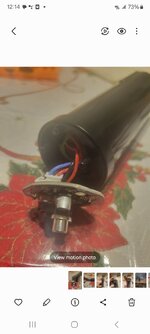heyhi12
Newbie level 4

- Joined
- Dec 19, 2024
- Messages
- 7
- Helped
- 0
- Reputation
- 0
- Reaction score
- 0
- Trophy points
- 1
- Activity points
- 56
I have a hyper ice massager that takes a 24 volt battery that seems like the charger works but the battery isn't taking charge.
I've put a meter to the charger and I'm getting 26 volts out of it.
I charged the battery a few nights in a row and it's just not giving me any output voltage on the meter.
Battery is 24 volts charger is for some reason 26 volts from the factory. It's a hypervolt hyper ice massager. I've never taken batteries apart but can somebody help me with this please.?
I've put a meter to the charger and I'm getting 26 volts out of it.
I charged the battery a few nights in a row and it's just not giving me any output voltage on the meter.
--- Updated ---
Battery is 24 volts charger is for some reason 26 volts from the factory. It's a hypervolt hyper ice massager. I've never taken batteries apart but can somebody help me with this please.?












